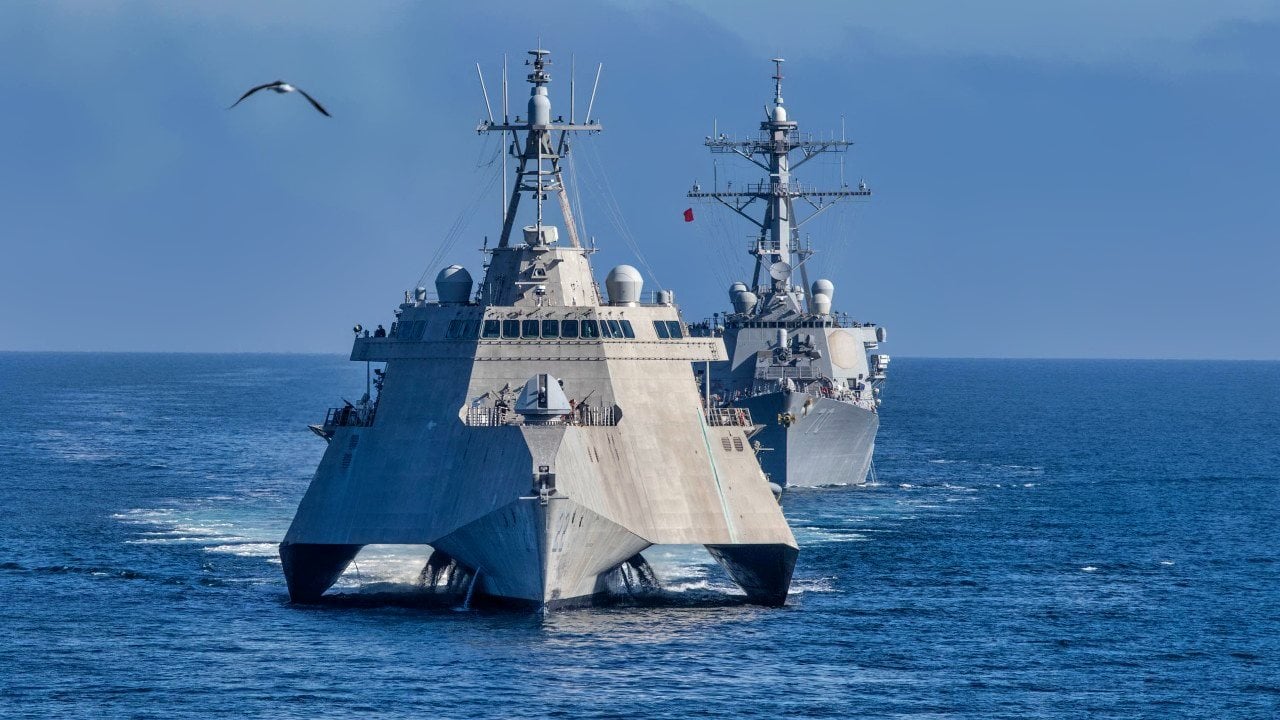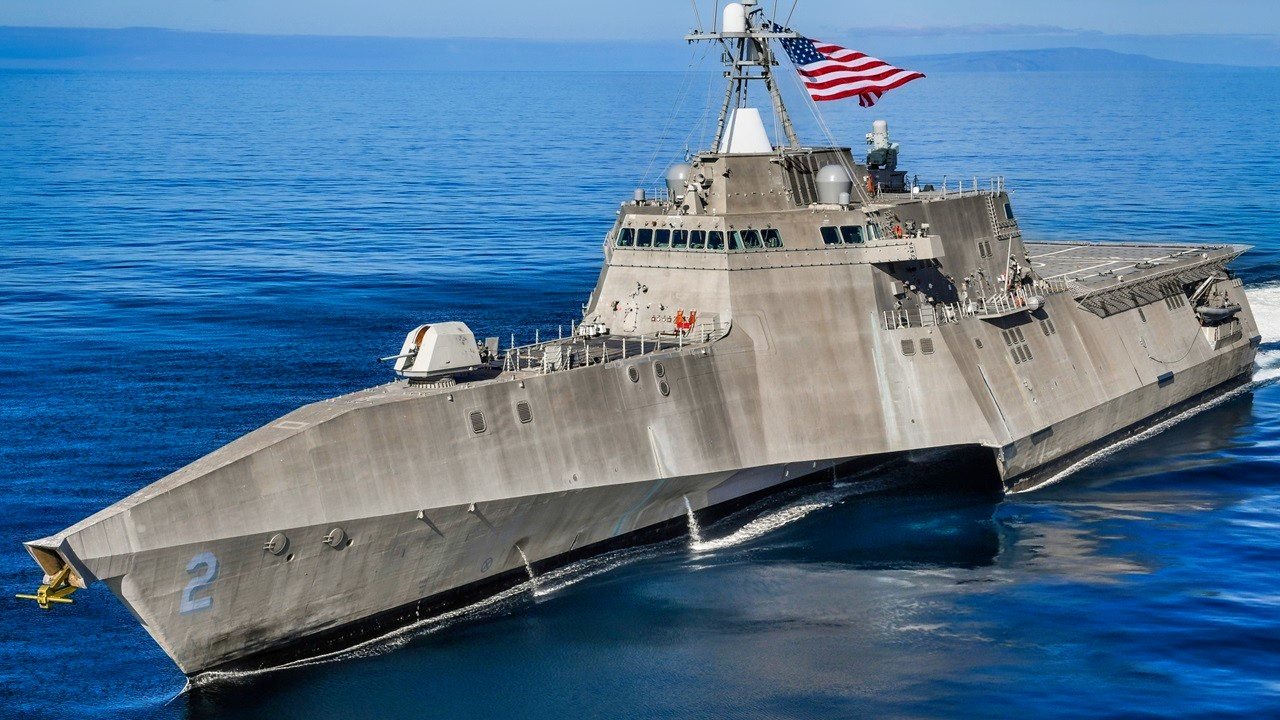
Littoral Combat Ship: Was It Really a Failure for the Navy?
What You Need to Know: The Littoral Combat Ship (LCS) program has faced considerable scrutiny, with critics citing high costs, maintenance dependencies, and limited survivability. Notably, some early models have already been decommissioned, despite originally intended 25-year service lives.

-However, recent reports suggest improvements in reliability, with Independence-class ships achieving a 96% operational efficiency. Advocates argue that LCS vessels should be judged as part of a broader joint force, not in isolation.
-Despite setbacks, the jury remains out on the LCS’s ultimate value, with current performance improvements offering potential for fulfilling niche roles within the U.S. Navy’s fleet.
Is the Navy’s Littoral Combat Ship Truly a Failure?
Look up the word “failure” in the dictionary, chances are you’ll see one of the definitions listed as “See Littoral Combat Ship (LCS).”
Okay, not really, but the U.S. Navy’s once much-ballyhooed LCS is now being almost universally derided as an expensive military boondoggle (even more so than the F-35 Lightning II stealth fighter and the V-22 Osprey tilt-rotor aircraft). For example, one professional acquaintance of mine, a U.S. Coast Guard officer, told me on condition of anonymity that “They’re worthless.” And to think, when I was a Strategy & Policy Analyst with Navy Warfare Group/OPNAV N5I6 under the Office of the Chief of Naval Operations at the Pentagon five years ago, the LCS was being trumpeted as the next big thing in naval technology.
However, for the sake of fairness & balance, we should ask ourselves: Was the LCS truly a complete & utter failure, or is there more to it than meets the eye?
Littoral Combat Ship Initial History and Specifications
There are two classes of LCS in the U.S. Navy arsenal, namely the Freedom class and the Independence class; sixteen of the former and nineteen of the latter have been completed. USS Freedom (LCS-1) was the lead ship of the first class, built by Fincantieri Marine Group, laid down on June 2, 2005, launched on September 23, 2006, and commissioned on November 8, 2008. The Freedom and her sister ships bear the following specifications and vital stats:
Displacement: 3.450 tons fully laden
Hull length: 387.6 ft (118.1 m)
Beam Width: 57.7 ft (17.6 m)
Draft: 14.1 ft (4.3 m)
Propulsion: four Rolls-Royce waterjets
Max speed: 47 knots (87 km/h; 54 mph)
Crew Complement: fifty core crew of commissioned officers and enlisted sailors; ninety-eight or more with mission package and air detachment crew.
Armament:
-one × BAE Systems Mk 110 57 mm (2.2 in) gun.
-four × .50 caliber (12.7 mm) machine guns
-two × Mk44 Bushmaster II 30 mm (1.2 in) guns
-twenty-one × RIM-116 Rolling Airframe Missile surface-to-air Missiles (SAMs)
As for the Independence class, that one kicked off (appropriately enough) with the USS Independence (LCS-2), built by Austal USA, laid down 19 January 2006, launched 26 April 2008, and commissioned on 16 January 2010.
Displacement: 3.422 tons fully laden
Hull length: 418 ft (127 m)
Beam Width: 104 ft (32 m)
Draft: 14 ft (4.3 m)
Propulsion:
-two × American Vulkan light weight multiple-section carbon fiber propulsion shaftlines
-four × Wartsila waterjets
Max speed: 44 knots (51 mph; 81 km/h))
Crew Complement: forty core crew (eight commissioned officers, thirty-two enlisted seamen) plus up to thirty-five mission crew
Armament:
-one × BAE Systems Mk 110 57 mm gun
-one × Raytheon SeaRAM Close-In Weapon System (CIWS)
-four × .50-cal guns (2 aft, 2 forward)
-two × 30 mm Mk44 Bushmaster II guns
-eight × RGM-184A Naval Strike Missiles
-twenty-four × AGM-114L Hellfire missiles
LCS: The Case Against
In a nutshell, the LCS was afflicted by:
-Propulsion system failures
-Contractor-dependent maintenance
-Difficulties in swapping mission configurations
-(Allegedly) under-armed and unable to survive in hostile combat environments
Accordingly, several of the LCS warships—including LCS-1 and LCS-2 no less—have already been decommissioned, which is rather embarrassing when you consider that these vessels were originally slated to have a shelf life of twenty-five years … and even more embarrassing when you consider that the USS Independence alone has a total projected cost of $704 million … damn near triple the original projected cost of $220 million.

Moreover, the originally planned fleet of 55 LCSs was pared down to 35.
LCS: The Case For
But before one writes off the Littoral Combat Ship, consider this from James Holmes of Real Clear Defense regarding the allegations of the platform lacking sufficient armament and survivability:
“One, as a general rule ships do not fight alone. They fight as part of a fleet and, assuming the battle takes place within reach of shore-based assets, as part of a joint force vying for command of the sea. Joint forces fight joint forces. And yet oftentimes the commentary over this or that platform seems to assume it will be thrown into the teeth of enemy firepower without support from the rest of the composite force. The idea seems to be that matching an individual platform’s capabilities against the worst an opponent can hurl against it lets you render a sound judgment of its fitness.”
Meanwhile, as Laura Heckmann points out in a March 26, 2024, article for National Defense, the remaining LCS ships have made remarkable strides in reliability:
“Capt. Marc Crawford, commodore of Littoral Combat Ship Squadron One, said as recently as 2020, 95 percent of maintenance checks were being handled by contractors, with maintenance execution teams handling 5 to 10 percent. So far in 2024, maintenance teams have taken over about 70 percent. ‘That in and of itself is a tremendous feat,’ he added … The latest triumph was an ‘unprecedented’’ 26-month deployment of the Independence-class USS Charleston to the Western Pacific, Crawford said … Four other Independence-class ships currently deployed to Seventh Fleet — Gabrielle Giffords, Manchester, Oakland and Mobile — are operating at a .73 materiel availability, “which means they’re operating at a 96 percent efficiency rate, which is fantastic,”[Cmdr. James] Hoey said.”
Long story short, the jury is still out on the Littoral Combat Ship. Time will tell.
About the Author: Christian D. Orr, Defense Expert
Christian D. Orr is a Senior Defense Editor for National Security Journal (NSJ). He is a former Air Force Security Forces officer, Federal law enforcement officer, and private military contractor (with assignments worked in Iraq, the United Arab Emirates, Kosovo, Japan, Germany, and the Pentagon). Chris holds a B.A. in International Relations from the University of Southern California (USC) and an M.A. in Intelligence Studies (concentration in Terrorism Studies) from American Military University (AMU). He has also been published in The Daily Torch , The Journal of Intelligence and Cyber Security, and Simple Flying. Last but not least, he is a Companion of the Order of the Naval Order of the United States (NOUS).
Image Credit: Creative Commons.


